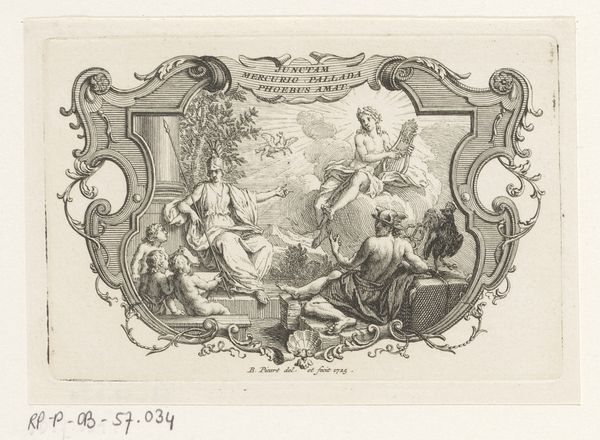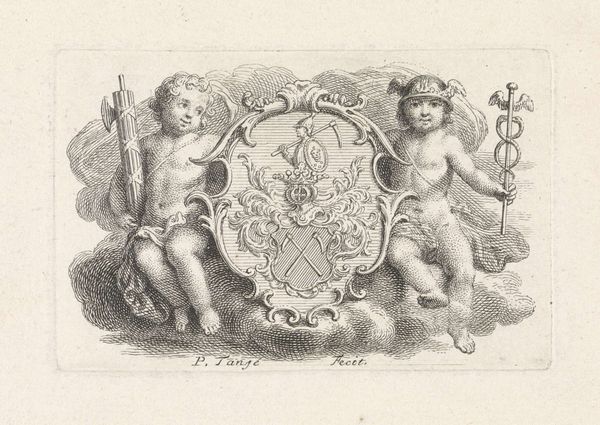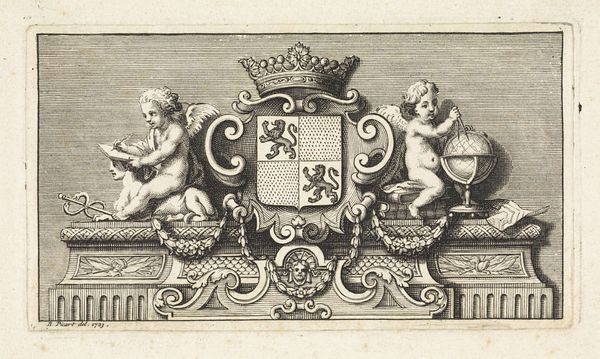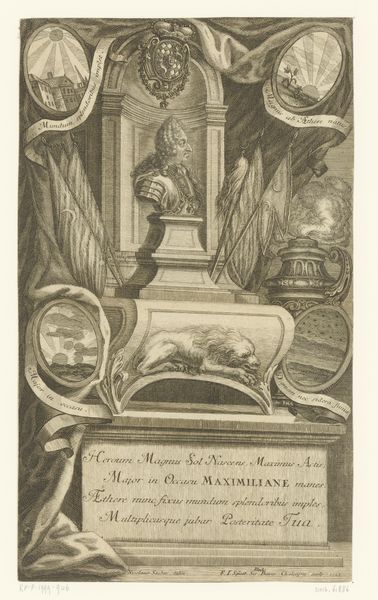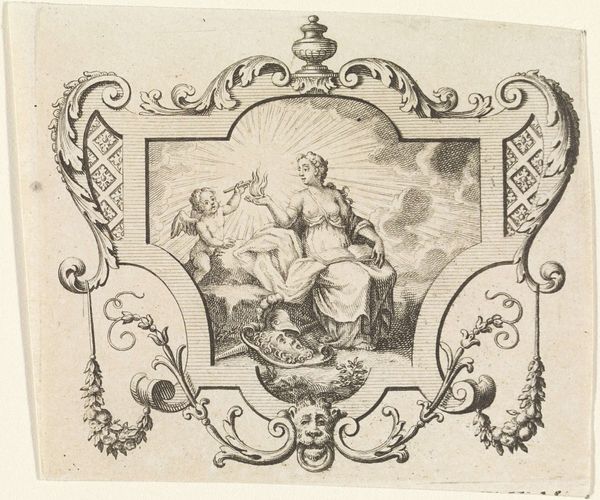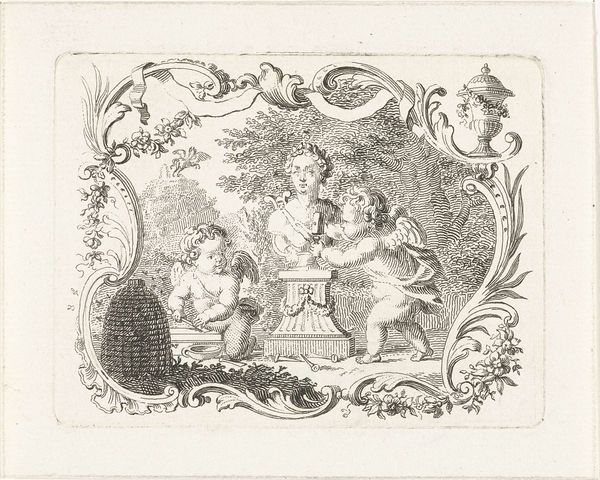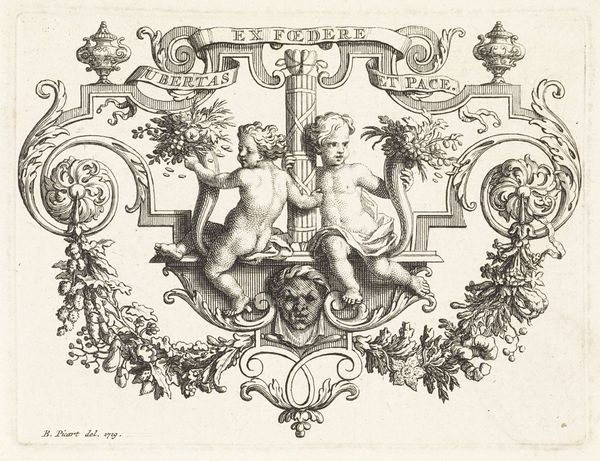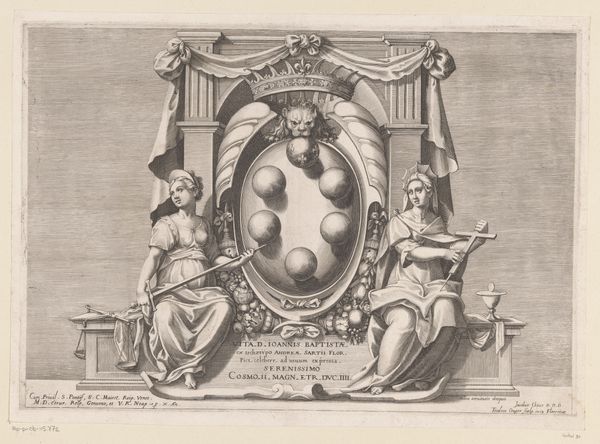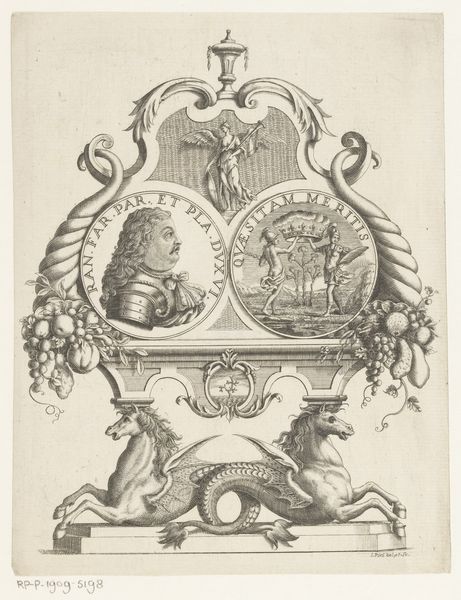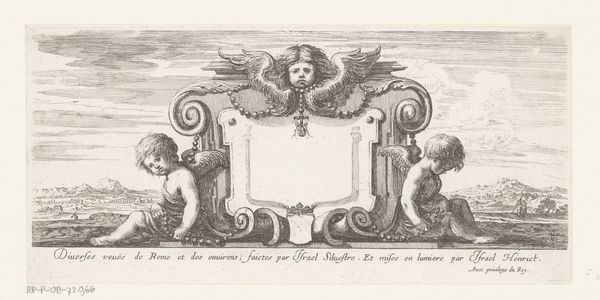
engraving
#
portrait
#
baroque
#
animal
#
dutch-golden-age
#
child
#
engraving
Dimensions: height 98 mm, width 155 mm
Copyright: Rijks Museum: Open Domain
Curator: So, here we have "Children and Animals," an engraving made after Frederick Bloemaert, around 1635, residing here at the Rijksmuseum. What strikes you about it? Editor: The combination of those chubby cherubs with the animal heads feels... unusual. The peacocks at the bottom add a strange sense of decorative weight, and it makes me wonder, how should we interpret this? Curator: It’s a piece ripe for contextual exploration! Dutch Golden Age art wasn’t created in a vacuum. How might social hierarchies, the burgeoning scientific curiosity of the time, or even the visual language of power influence a piece like this? Editor: I see what you mean. Are the animals symbolic in a way I’m missing? Curator: Potentially! Think about the status these animals held. Lions often represented power, stags hunting game, peacocks status, even in controlled nature like the menageries the wealthy were beginning to collect. But then why render them in conjunction with children? Editor: Almost like tamed nature for future rulers perhaps? A connection between innocence and dominion? Curator: Precisely! It pushes us to consider how images reinforced societal structures. The Dutch Golden Age might have seen growing mercantile power but gender, class, and race remained firmly entrenched hierarchies. Editor: That makes me see it differently, beyond just cherubs and animals. The engraving now feels like a complex statement reflecting privilege of that era. Thank you! Curator: Of course. Analyzing art is an intellectual archeology unearthing those power dynamics visualized in the aesthetic choices, the artistic styles that tell deeper narratives.
Comments
No comments
Be the first to comment and join the conversation on the ultimate creative platform.

